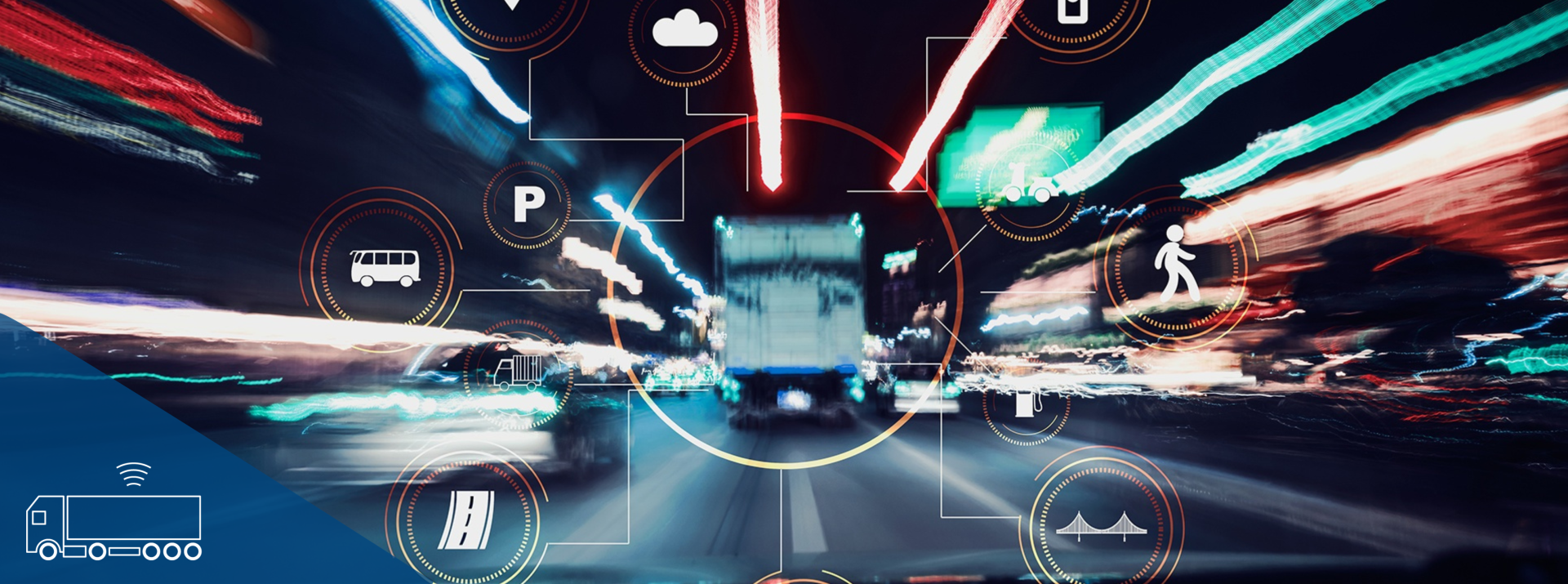
Driver assistance systems help drivers to identify hazards and can take over tasks or actively intervene in critical situations. After the introduction of the disc brake and spread of electronic braking control, intelligent driver assistance systems represent the third quantum leap in improving traffic safety.
Contact
80809 München
Deutschland - Germany
info@knorr-bremse.com
Advanced Emergency Braking System (AEBS)
The Advanced Emergency Braking System (AEBS) from Knorr-Bremse is an electronic safety system in a vehicle that intervenes automatically in an emergency and brings the vehicle to a standstill quickly. The AEBS uses sensors to detect whether a collision is imminent or already unavoidable. In such cases, the braking force is increased automatically or the brakes are activated fully to prevent an accident or at least minimize its impacts.
Just as with Adaptive Cruise Control (ACC), the entire range of effective mechanisms are available to brake the vehicle: from throttling the fuel supply to full braking.
An AEBS can save lives and prevent serious injuries by reacting quickly and precisely in dangerous situations.
Key benefits:
- Mitigating collisions even at speeds of up to 80 km/h
- It can help avoid accidents or reduce their severity by automatically braking the vehicle if a collision appears unavoidable. This makes it possible to mitigate collisions even at speeds of up to 80 km/ H.
- It can relieve the driver and help them to react more quickly if they are distracted not as alert as they should be.
- It can help increase drivers’ awareness of potential hazards on the road by warning them against abrupt braking maneuvers.
- Some variations of the AEBS can detect pedestrians and other road users near the vehicle, and can automatically bring the vehicle to a standstill to avoid collisions.
- An AEBS can help protect the vehicle's occupants by reducing the speed and therefore the risk of injury in case of an accident.
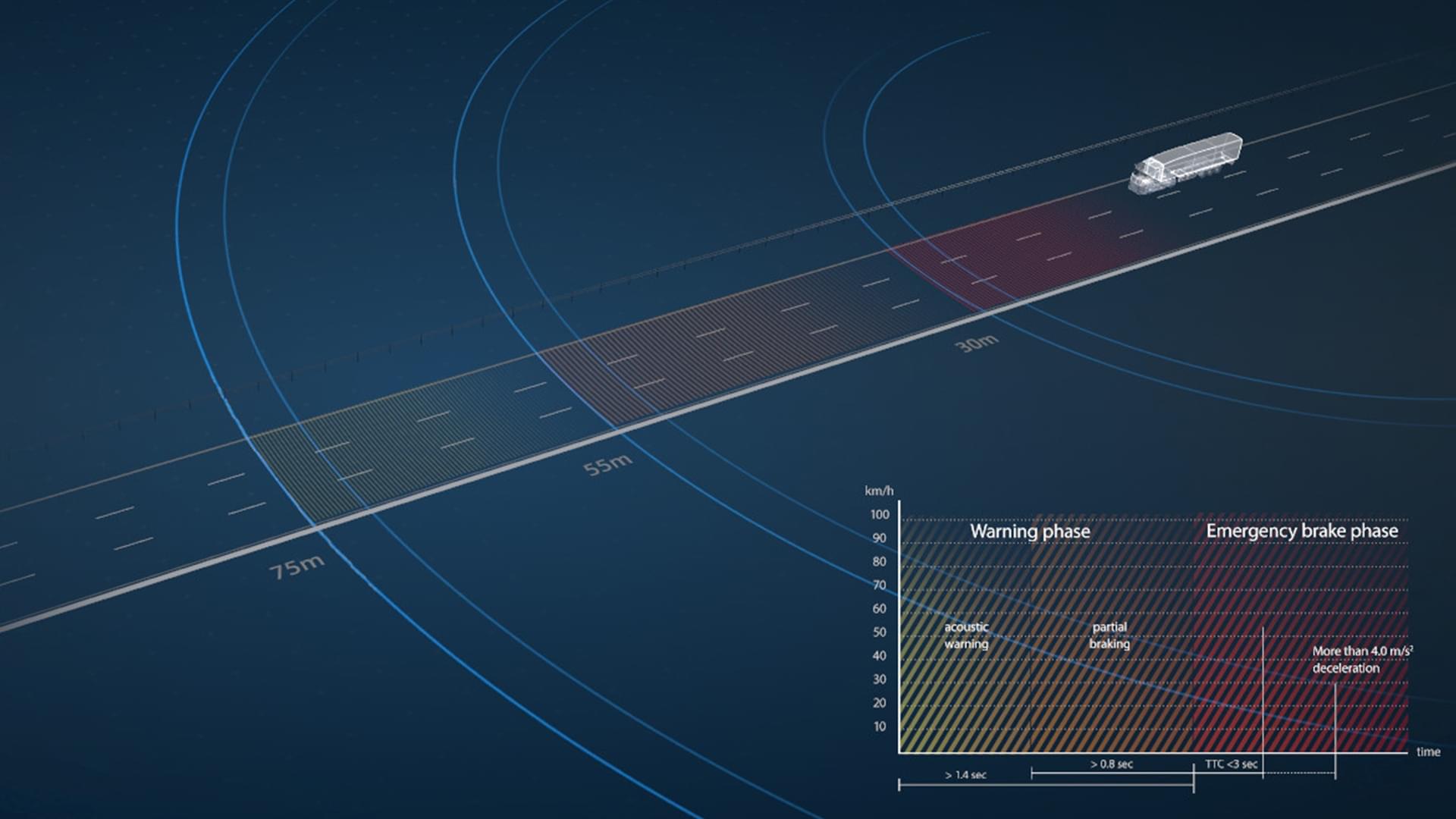
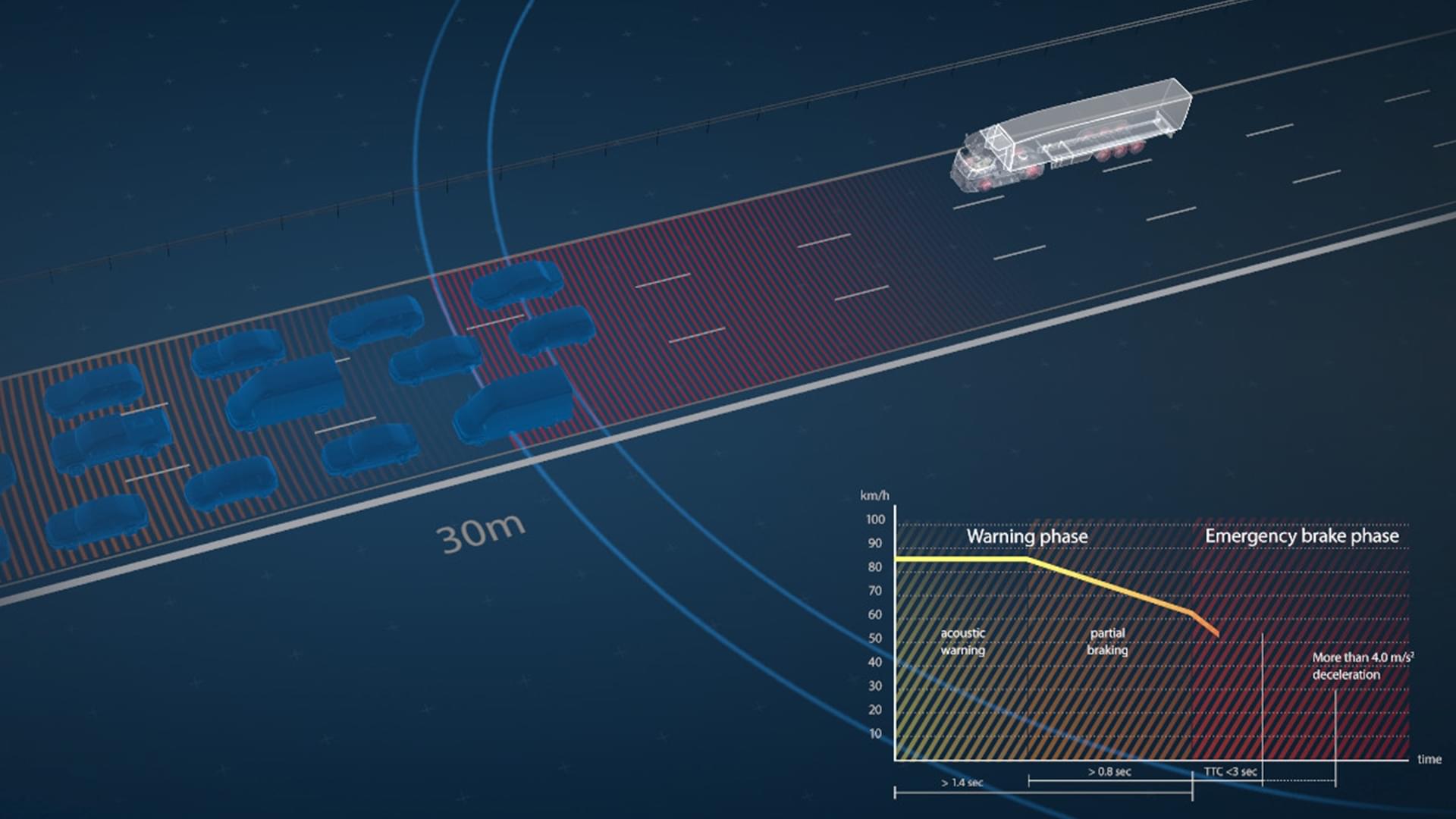
Lane Departure Warning or Lane Keeping Assist (LDW or LKA)
The Lane Departure Warning (LDW) from Knorr-Bremse is a vehicle assistance system that supports the driver by issuing an acoustic or visual warning when the vehicle threatens to drift out of the lane. The purpose of this system is to avoid accidents caused by driver fatigue or inattentiveness. The warning is issued when the driver leaves the lane using cameras on the vehicle, and can be extended with the Lane Keeping Assist (LKA) function. The LKA uses steering commands to bring the vehicle back into the lane.
Key benefits:
- Better traffic safety by mitigating typical causes of accidents, like collisions with vehicles in the next lane or collisions with oncoming traffic
- Use as a warning system only, or as an LKA that can actively intervene in steering
- Lane Keeping Assist function can be optionally expanded into Lane Centering (LC), which keeps a vehicle continuously in the driving lane
Adaptive Cruise Control (ACC)
Adaptive Cruise Control (ACC) from Knorr-Bremse is an advanced speed regulation system that automatically adjusts speed to the traffic situation. The system uses sensors and cameras to measure the distance from the vehicle in front and automatically adjusts the speed to keep the vehicle at the desired distance. When the vehicle in front becomes slower, the ACC reduces the speed of the driver’s own vehicle to maintain the suitable distance. Once the road is clear again, the system adjusts back to the previously set speed.
By doing so, the cruise control relieves drivers, helps avoid rear-end collisions and improves efficiency of road usage via more even speed distribution. ACC from Knorr-Bremse integrates a wide range of control functions and coordinates the engine, transmission and different braking systems like the retarder, motor or service brake.
Next generation ACC systems detect vehicles cutting into a lane, brake to a standstill, then independently start driving again.
Key benefits:
- Better traffic safety by relieving the driver from monotonous work, and precisely maintaining the required minimum distances
- Increasing road usage and fuel savings through more even driving
- Automatic stop and go also available as an option
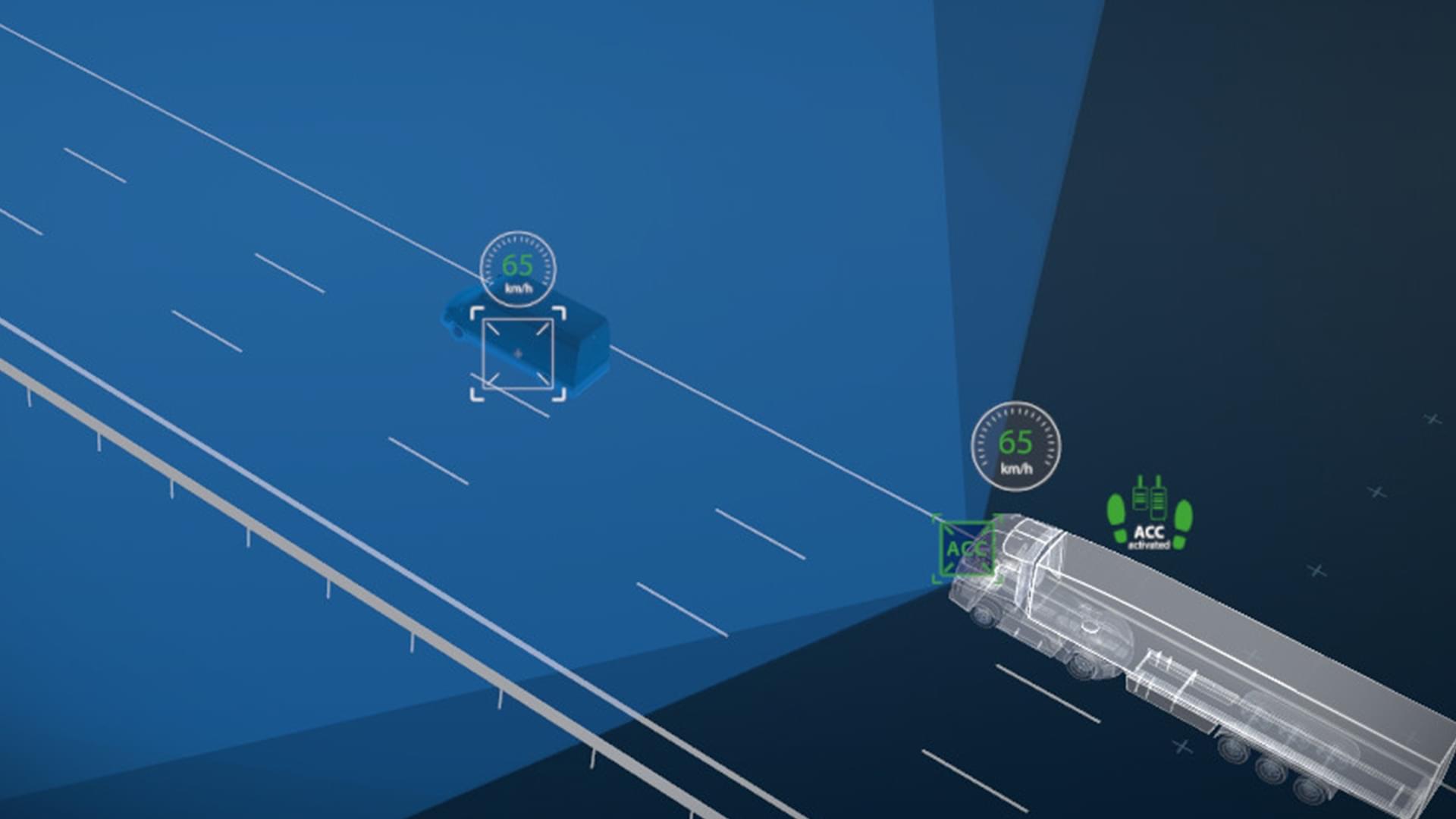
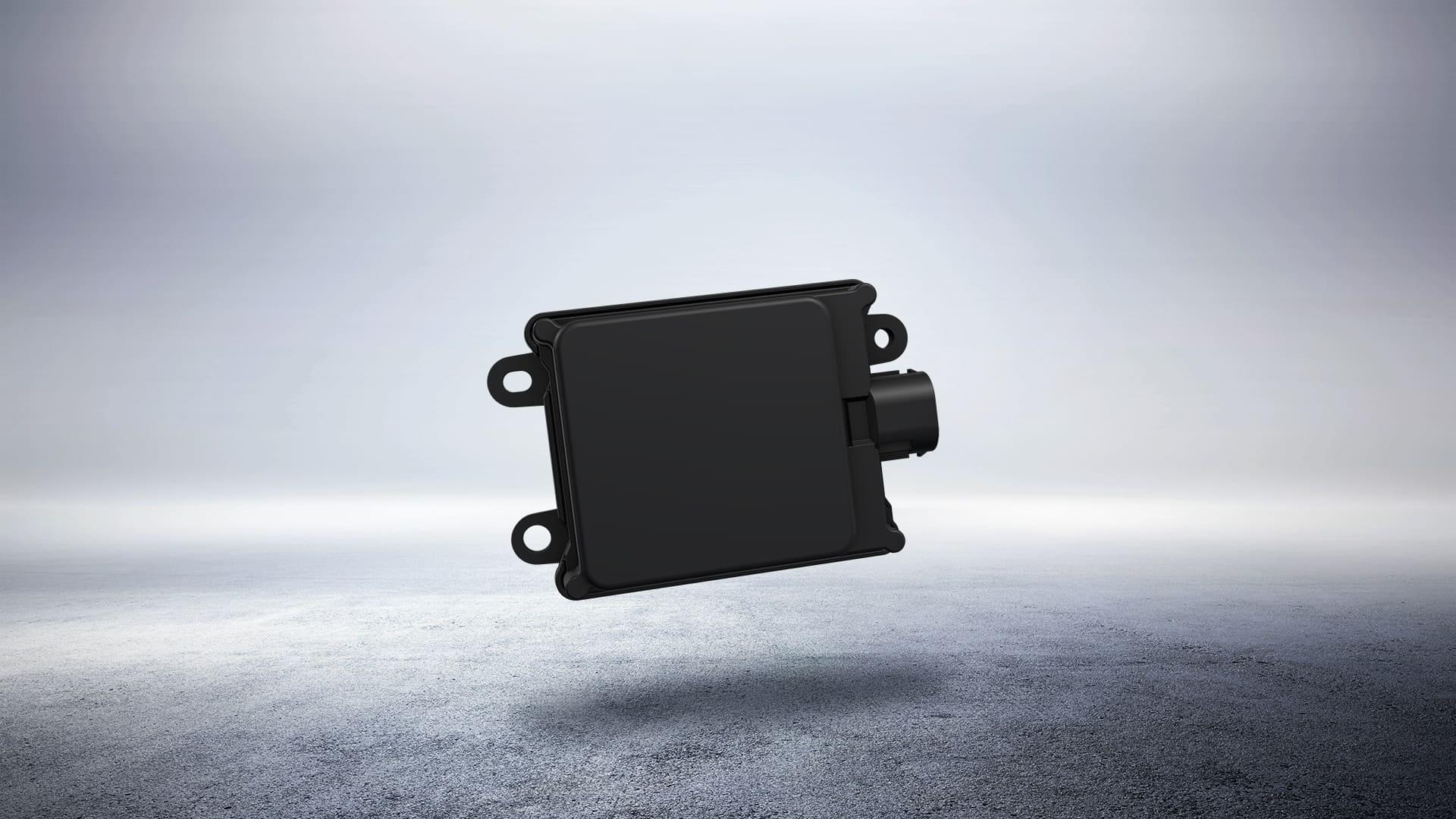
Pedestrian Advanced Emergency Braking System (PAEBS)
The Pedestrian Advanced Emergency Braking System (PAEBS) automatically brakes the vehicle if there are moving, unprotected road users like pedestrians in front of it. The system detects pedestrians or cyclists in an urban area even before they cross the vehicle's path. It starts a cascade of warnings to notify the driver, and can initiate braking independently and stop the vehicle completely to avoid a collision.
Key benefits:
- Special protection for vulnerable road users in urban environments
- Range of actions: Cascade of warnings, up to bringing the vehicle to a full stop
- Consideration of accident scenarios from the European New Car Assessment Programme (NCAP)
High Beam Assist (HBA)
The High Beam Assist (HBA) from Knorr-Bremse is a function that switches a vehicle's high beams on and off automatically. The assistant uses a camera inside the vehicle to detect traffic on the road and automatically switch off the high beams if other cars are driving in front of or are oncoming towards the vehicle. Once they are no longer visible, the assistant switches the high beams on again to ensure optimal visibility. The high beam assist can help protect other drivers from glare, improving road safety.
Key benefits:
- Increasing safety and comfort for the driver and other road users
- Activation of the high beams can be configured depending on vehicle speed
Blind Spot Information System (BSIS)
The primary purpose of a Blind Spot Information System (BSIS) is to protect pedestrians and cyclists directly in front of and beside a truck or bus. Serious accidents occur regularly, in particular during right turns. The reason for this is that, despite multiple side mirrors, bus and truck drivers cannot see road users in the direct vicinity of the vehicle due to their elevated seating position, or have a very difficult time doing so (blind spot). Because of this, Knorr-Bremse offers blind spot information systems for trucks and buses both as an OEM system or for retrofitting.
If the sensors in the BSIS detect an object in the danger zone, the system starts an acoustic and visual cascade of warnings.
The system can optionally support drivers in safely changing lanes using the Lane Change Decision Aid (LCDA) function outside of the city. Radars installed on the vehicle's sides detect vehicles in neighboring lanes, preventing the driver from changing lanes or merging too early.
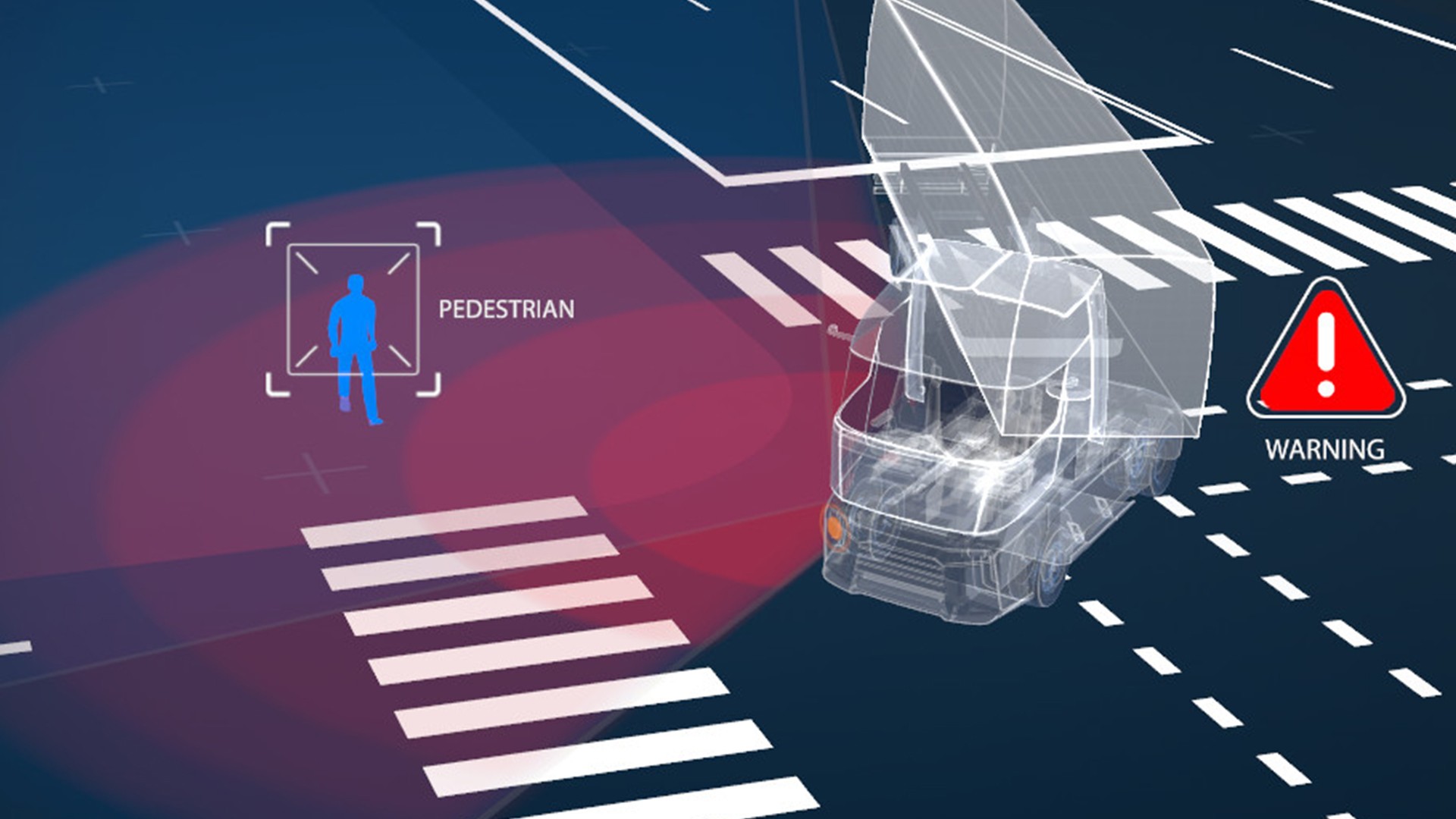
MOIS: Special type of BSIS
The Moving Off Information System (MOIS) supports drivers in seeing pedestrians and cyclists directly in front of the vehicle, in particular when the vehicle starts moving. Radar systems installed on the front and side of the vehicle issue warnings for both static and moving objects.
Key benefits:
- Increased road safety thanks to mitigating typical accident situations like turning right through automated detection of particularly vulnerable road users in the blind spot (pedestrians, cyclists)
- Knorr-Bremse offers blind spot information systems both as an OEM system or for retrofitting.
- Optional: Lane Change Assistant
- Moving Off Information System (MOIS) to protect road users in the direct vicinity of the vehicle
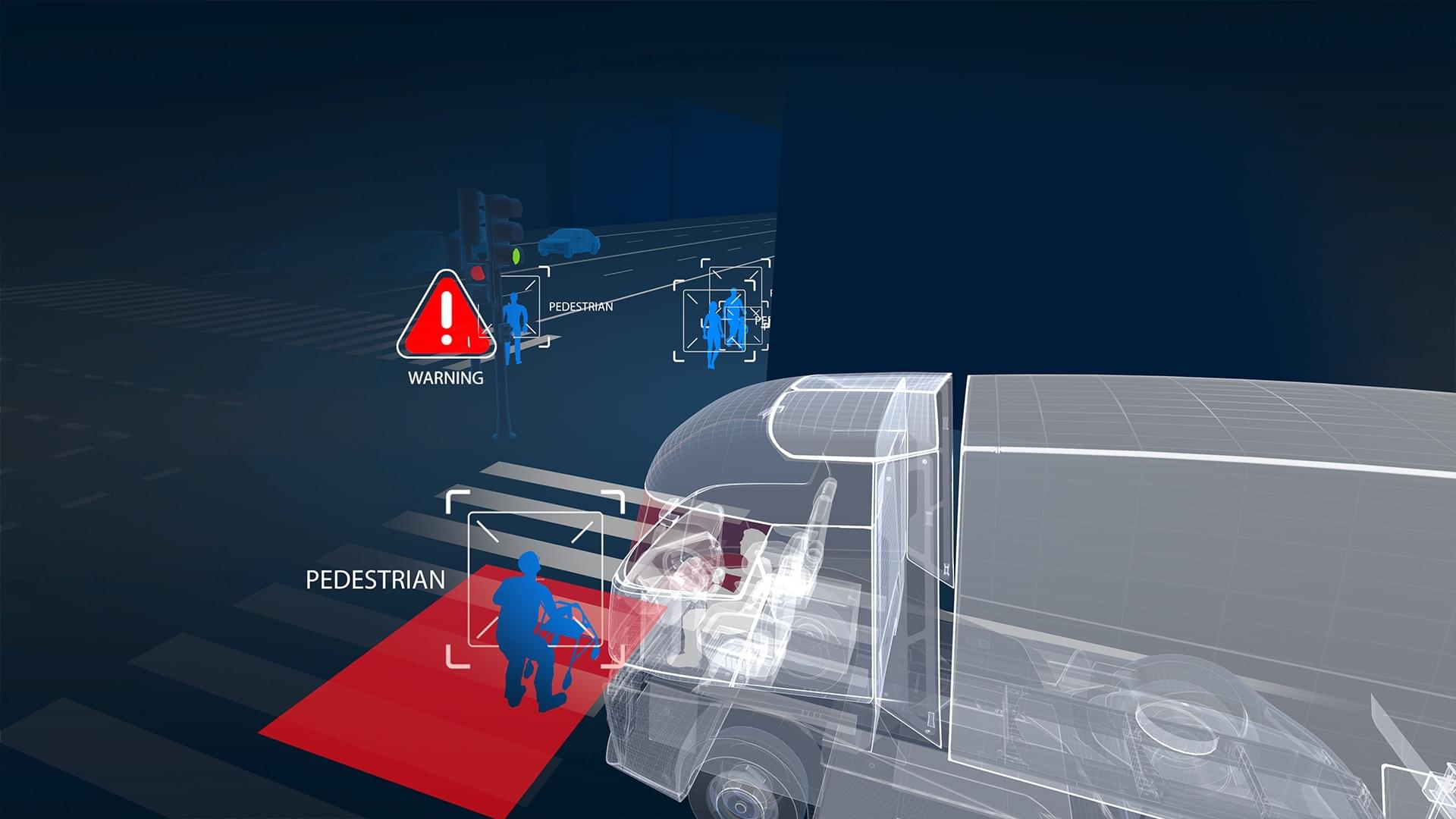
Traffic Sign Recognition (TSR) / Intelligent Speed Assistant (ISA)
Traffic Sign Recognition (TSR) from Knorr-Bremse is an assistance system in modern vehicles that uses cameras and processing technology to detect traffic signs and display these to the driver. The TSR detects the shape, color and arrangement of traffic signs to notify the vehicle of speed limits, passing prohibitions, stop signs, one-way streets and other relevant traffic signs. The system can warn the driver through acoustic or visual signals to help them comply with applicable traffic regulations and avoid possible fines or accidents.
The Intelligent Speed Assistance (ISA) from Knorr-Bremse as an expansion to the TSR is a vehicle system that supports the driver in complying with the permitted speed. It can work in different ways, such as by displaying the current speed on the dashboard or through an acoustic warning signal if a speed limit is exceeded. The system then automatically regulates the speed, meaning that the driver cannot drive faster than the permitted speed. ISA systems are being used more and more in modern vehicles, with the goal of helping reduce traffic accidents and violations. To do so, the system technology combines Traffic Sign Recognition with map data for the route traveled.
ISA requirements are set forth today in EU General Safety Regulations, and are applicable to new vehicles registered after July 2024.
Key benefits:
- Increased road safety through clearly detecting and providing notification of speed limits.
- Fulfilling the requirements for Intelligent Speed Assistance (ISA) set forth in the EU General Safety Requirements


